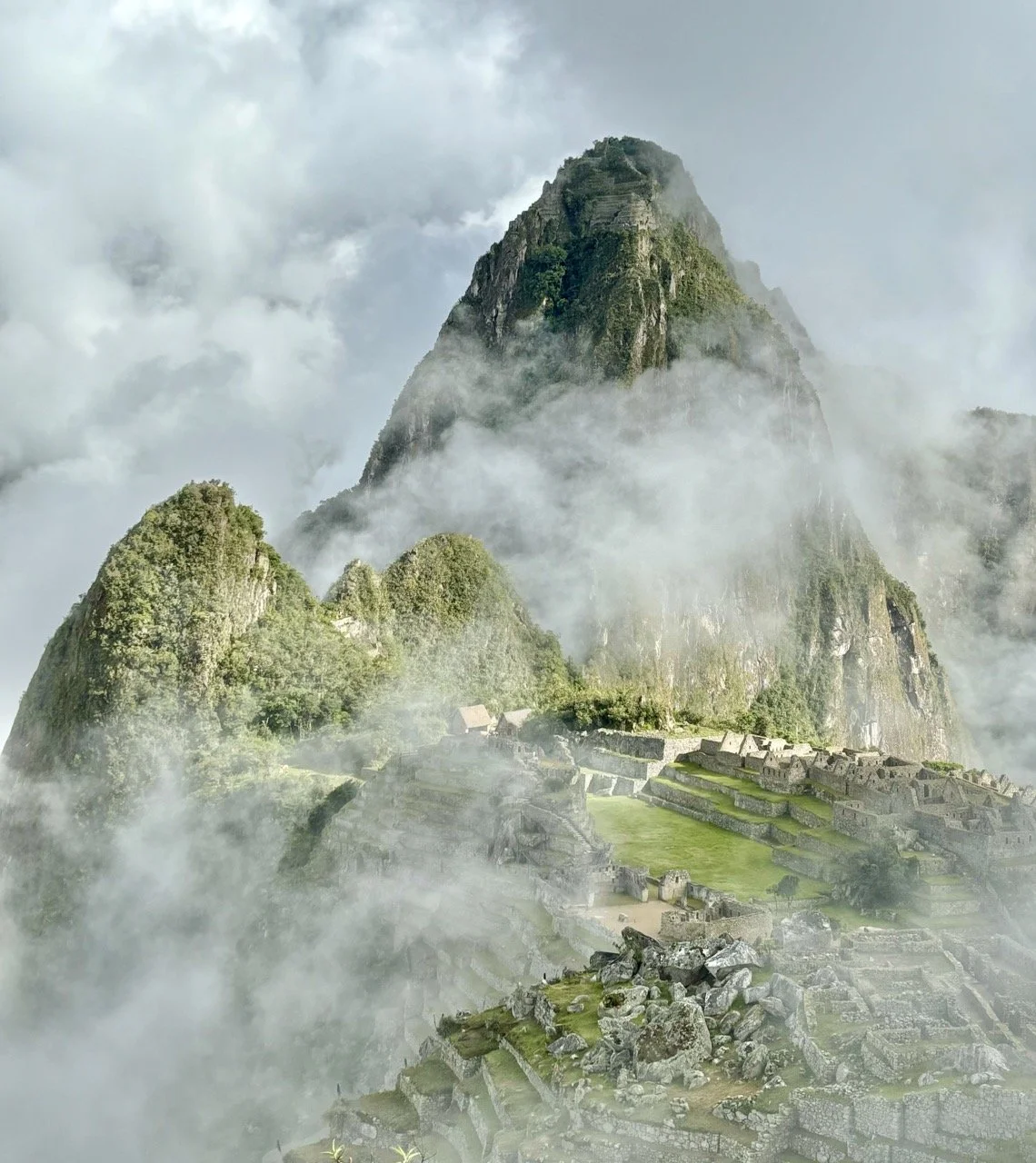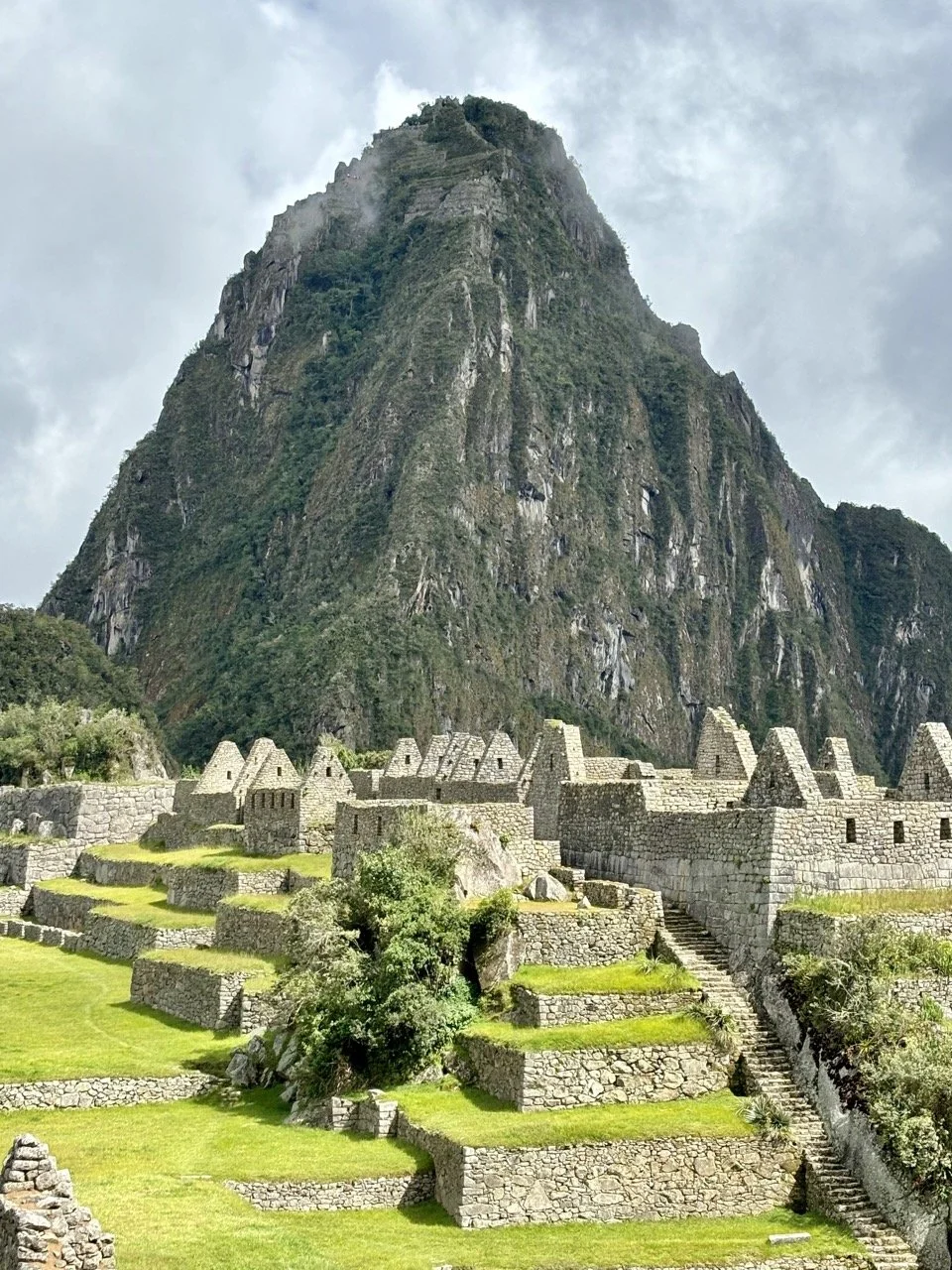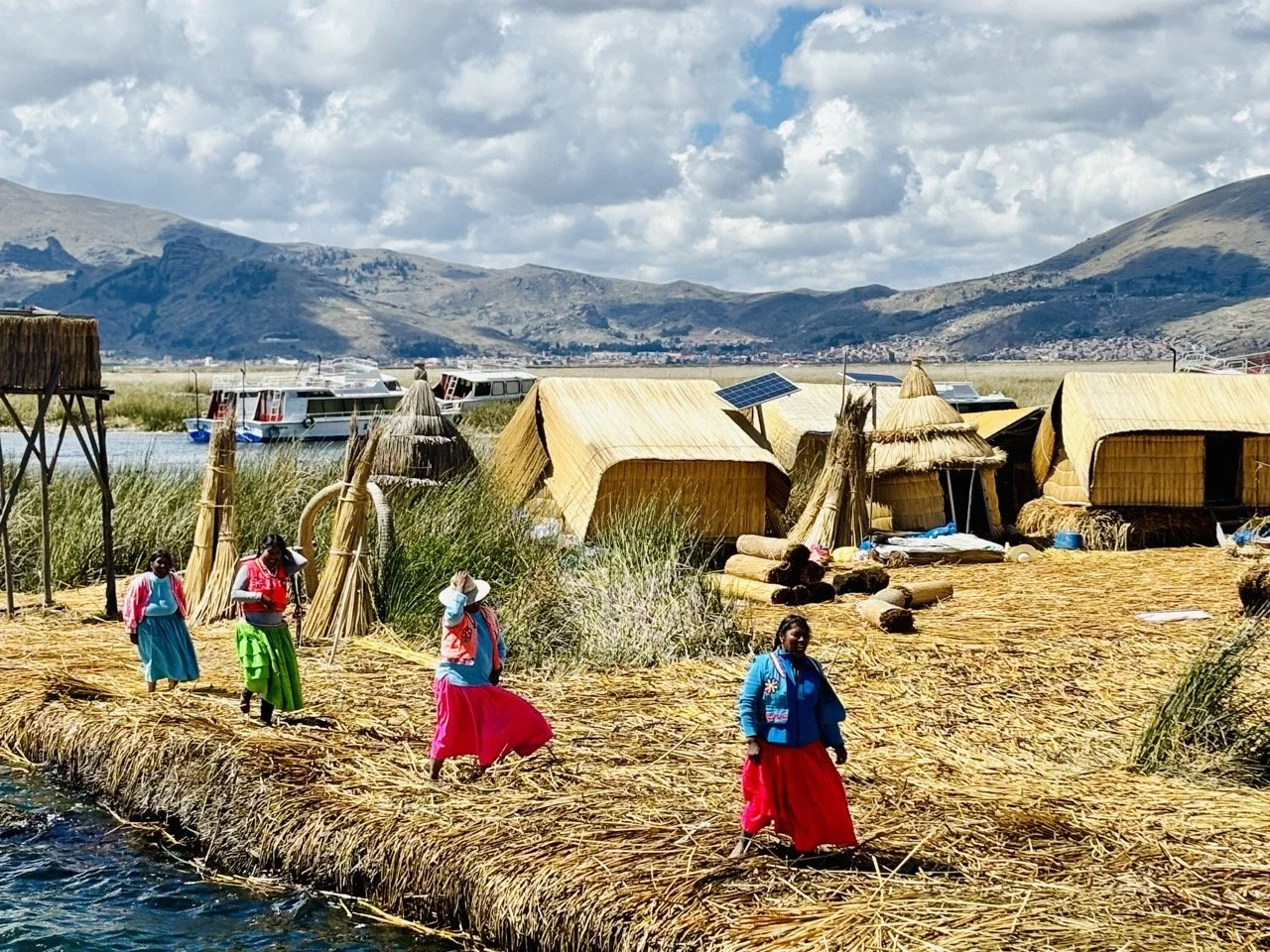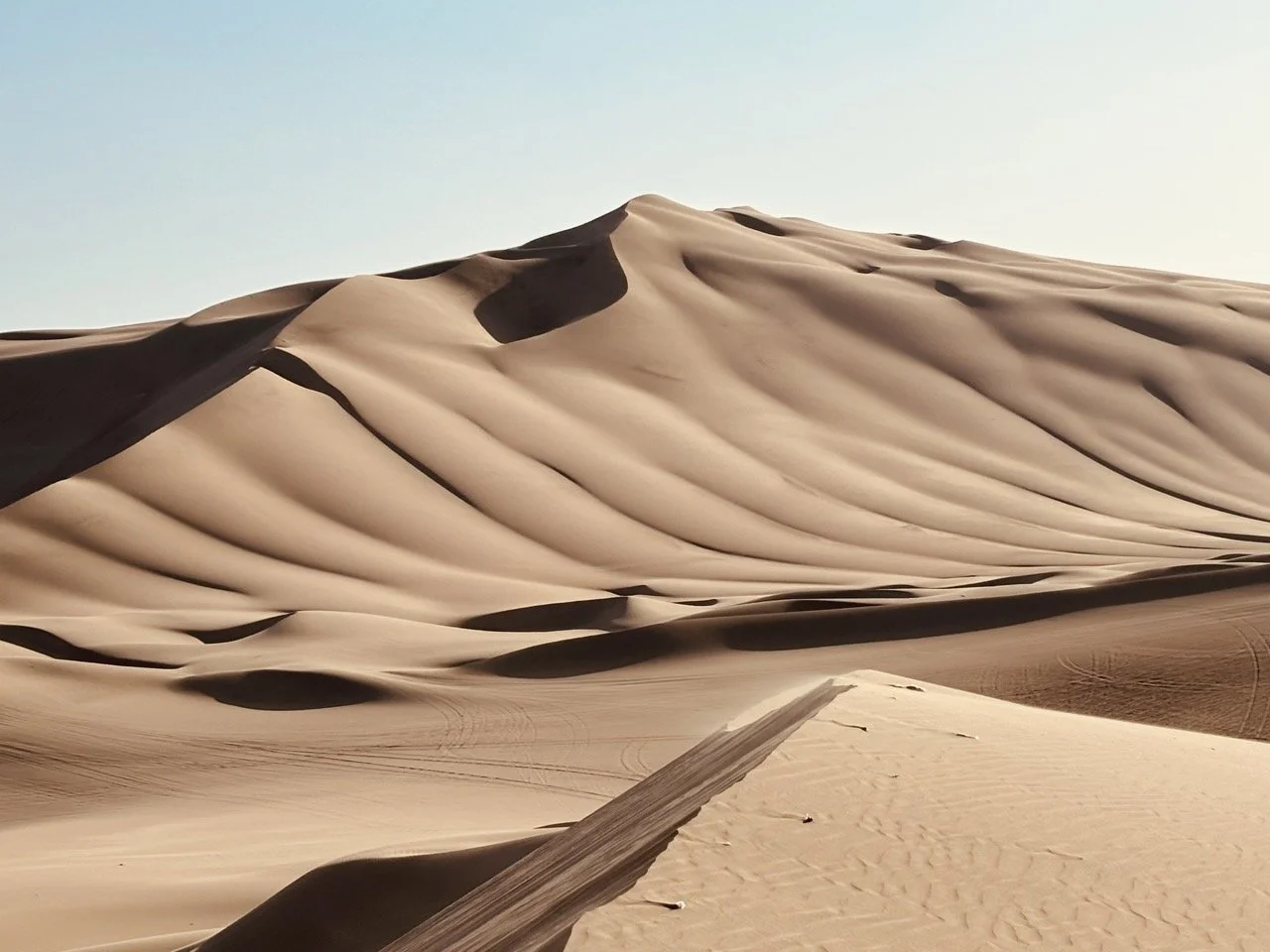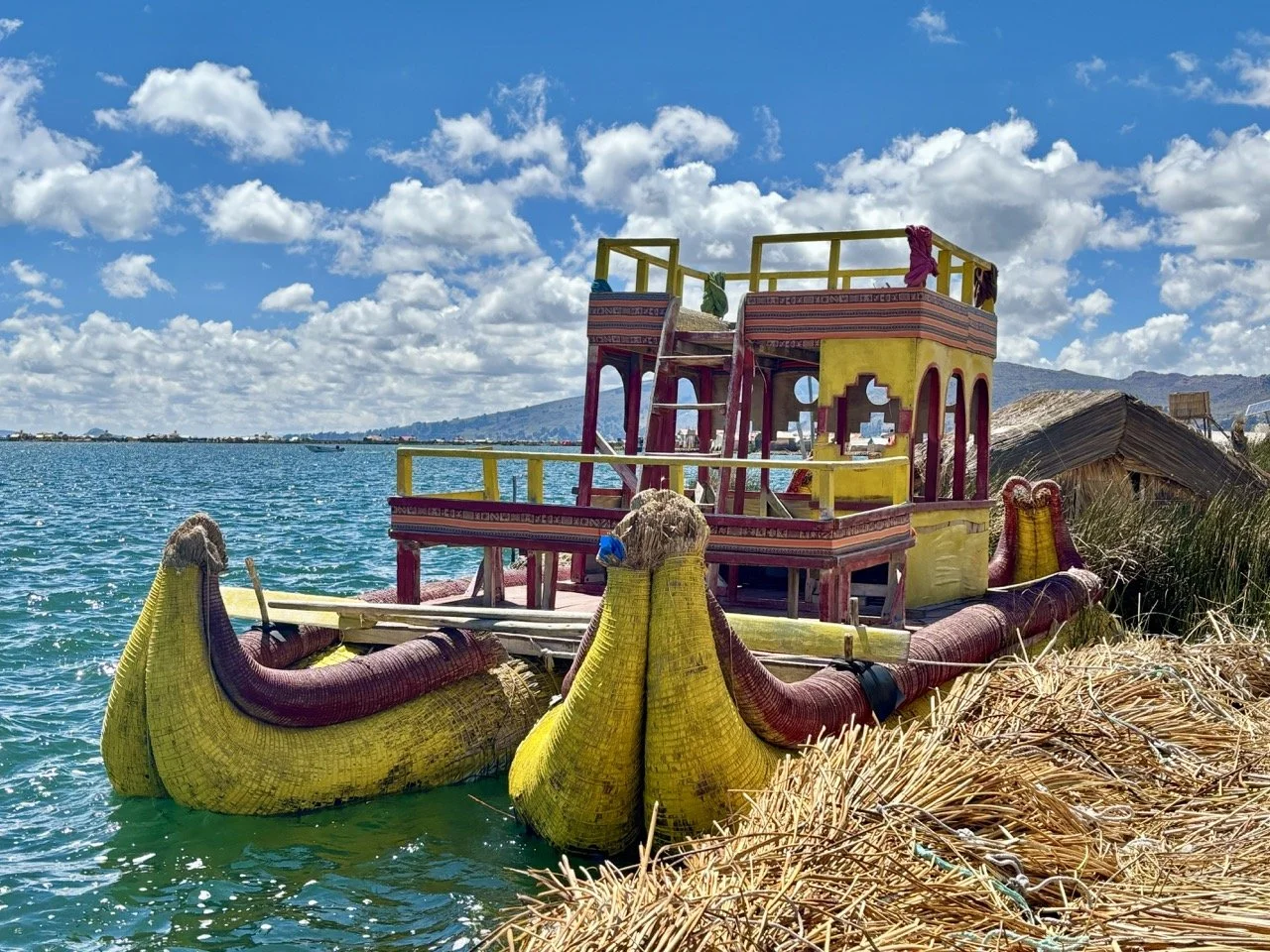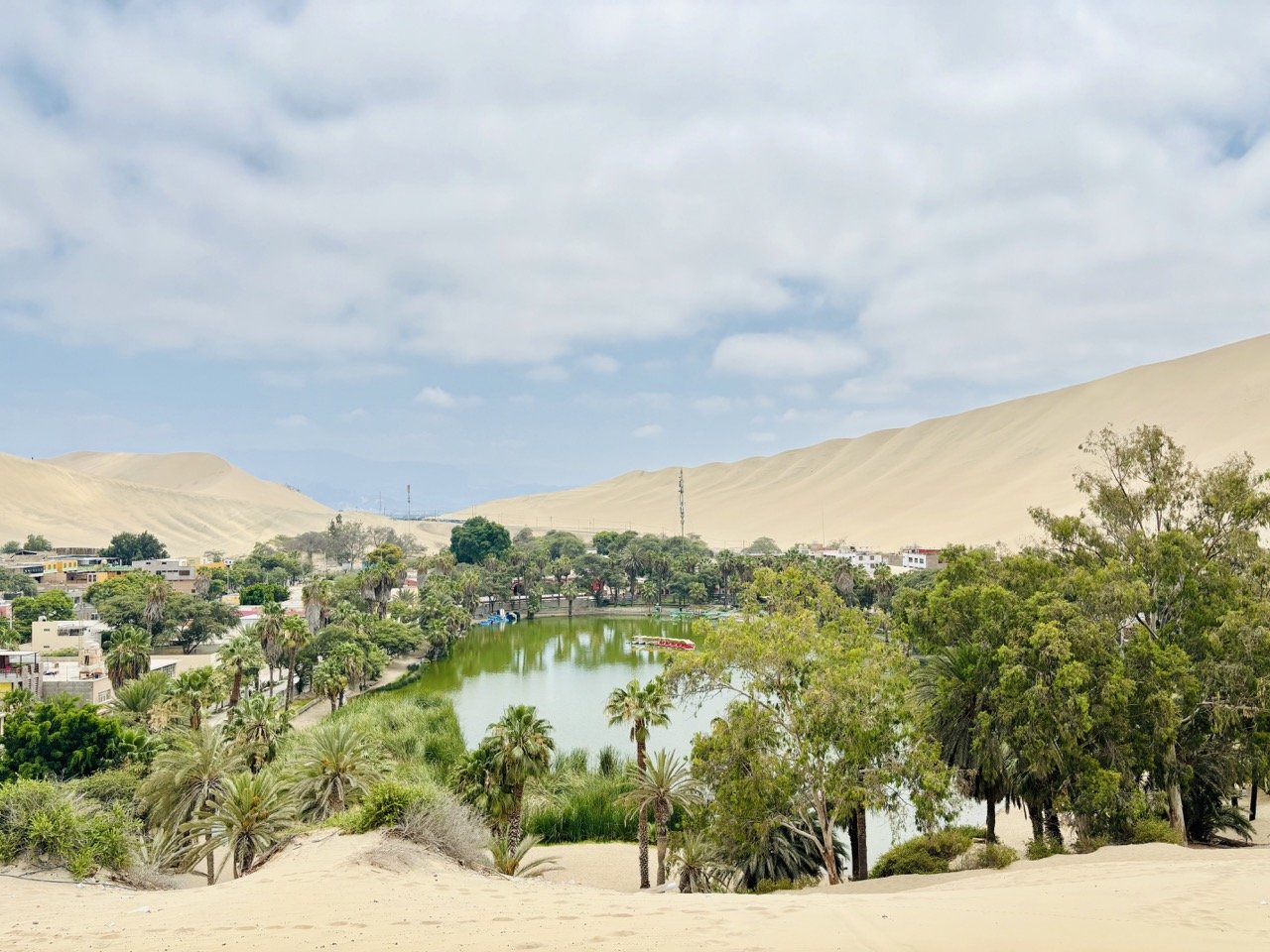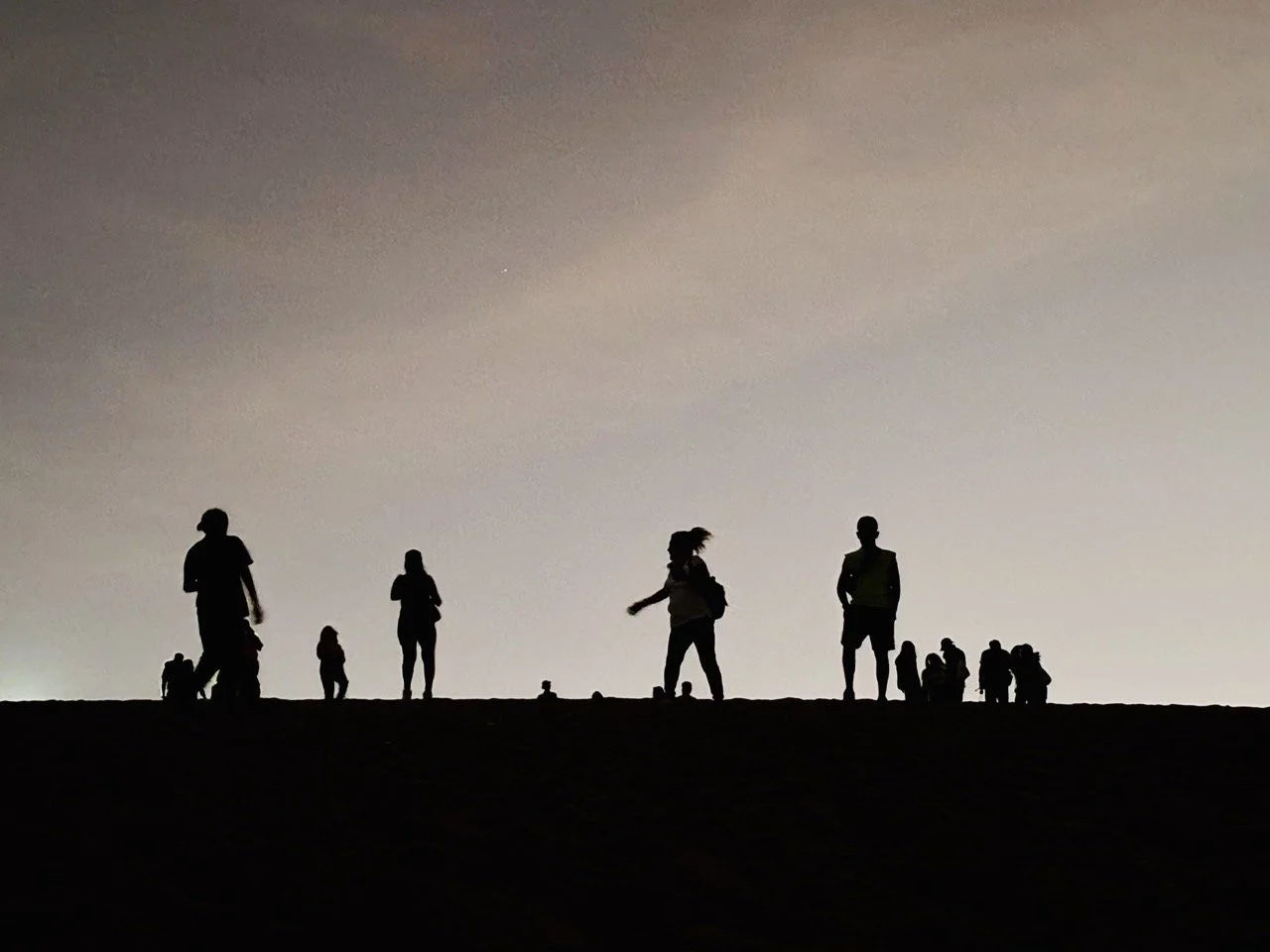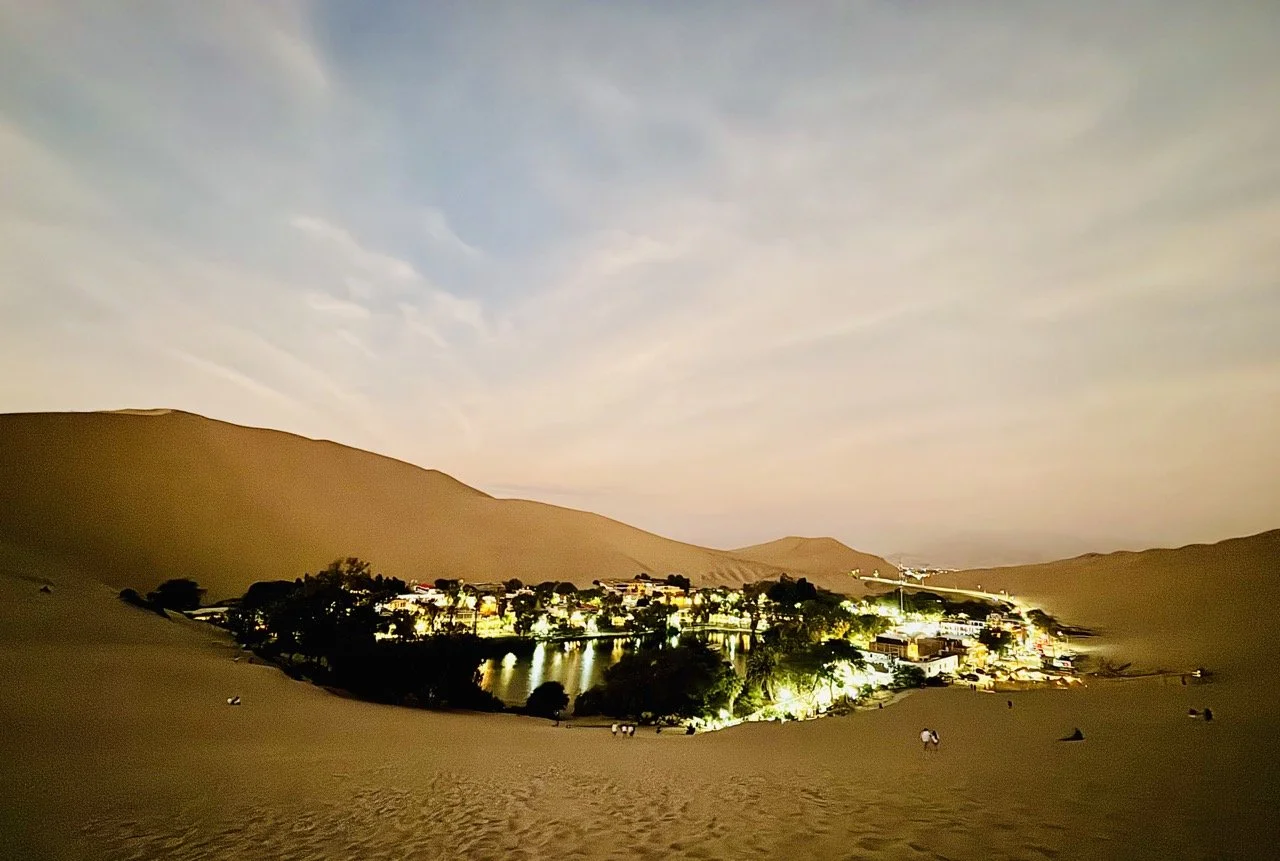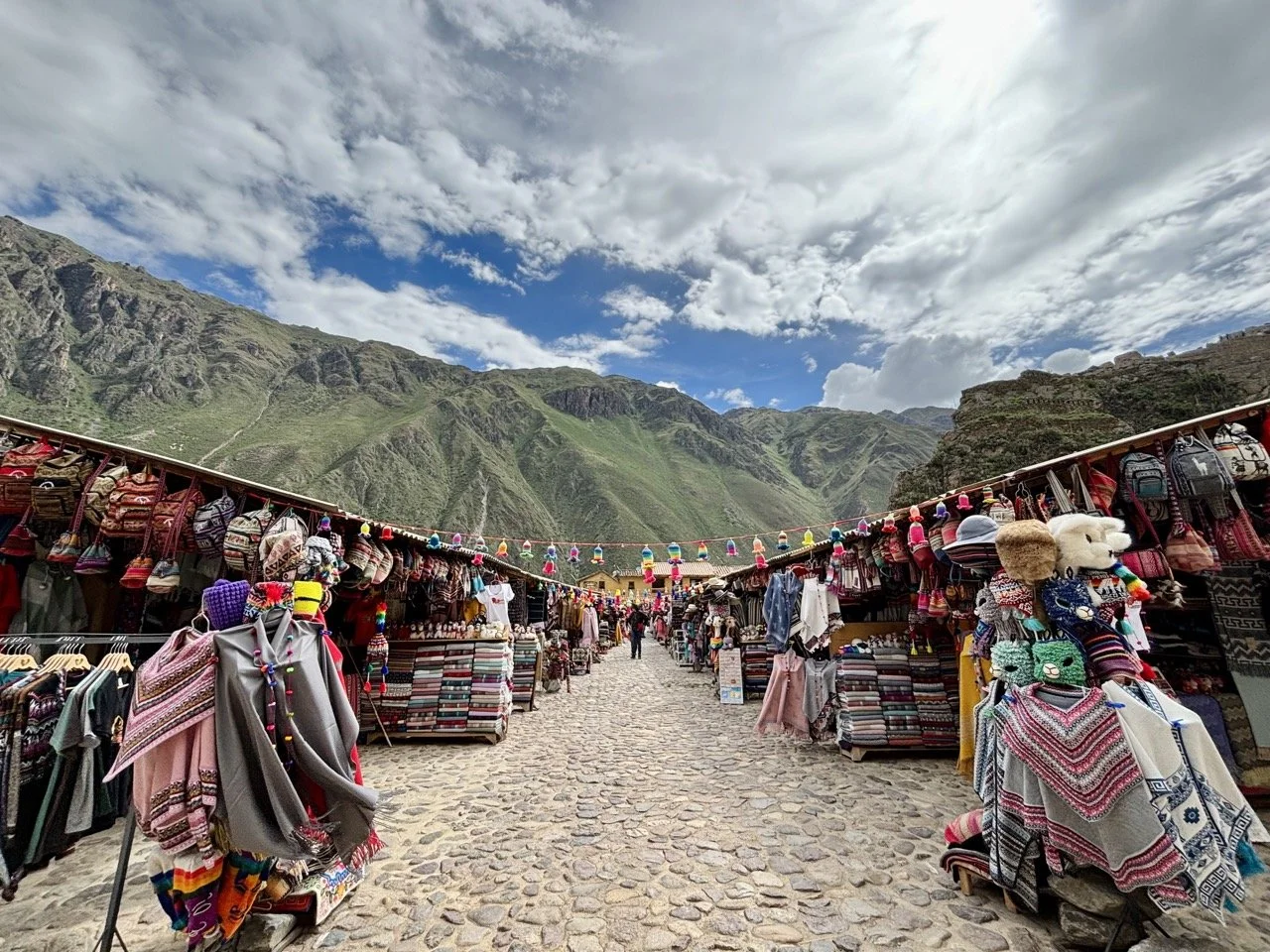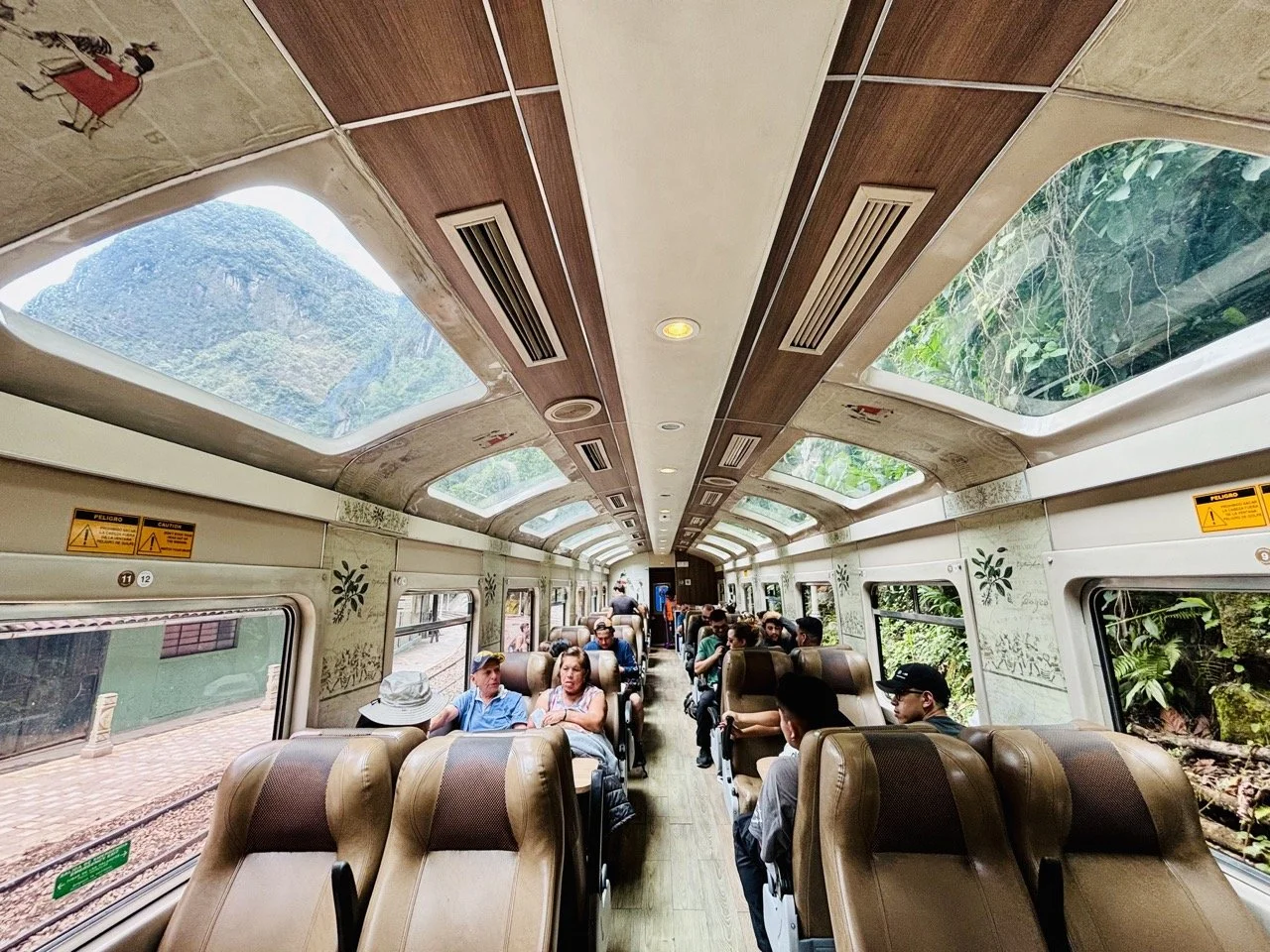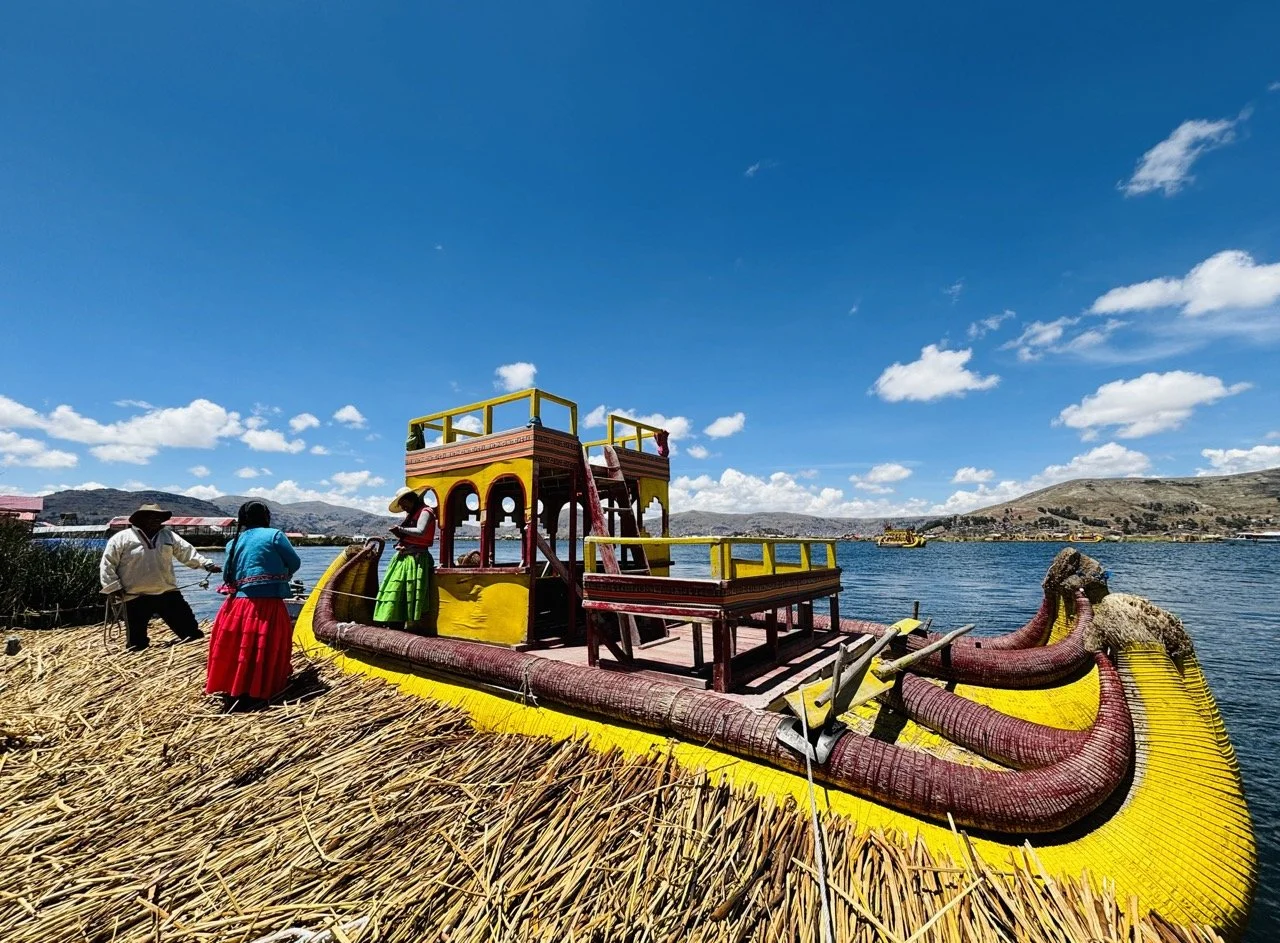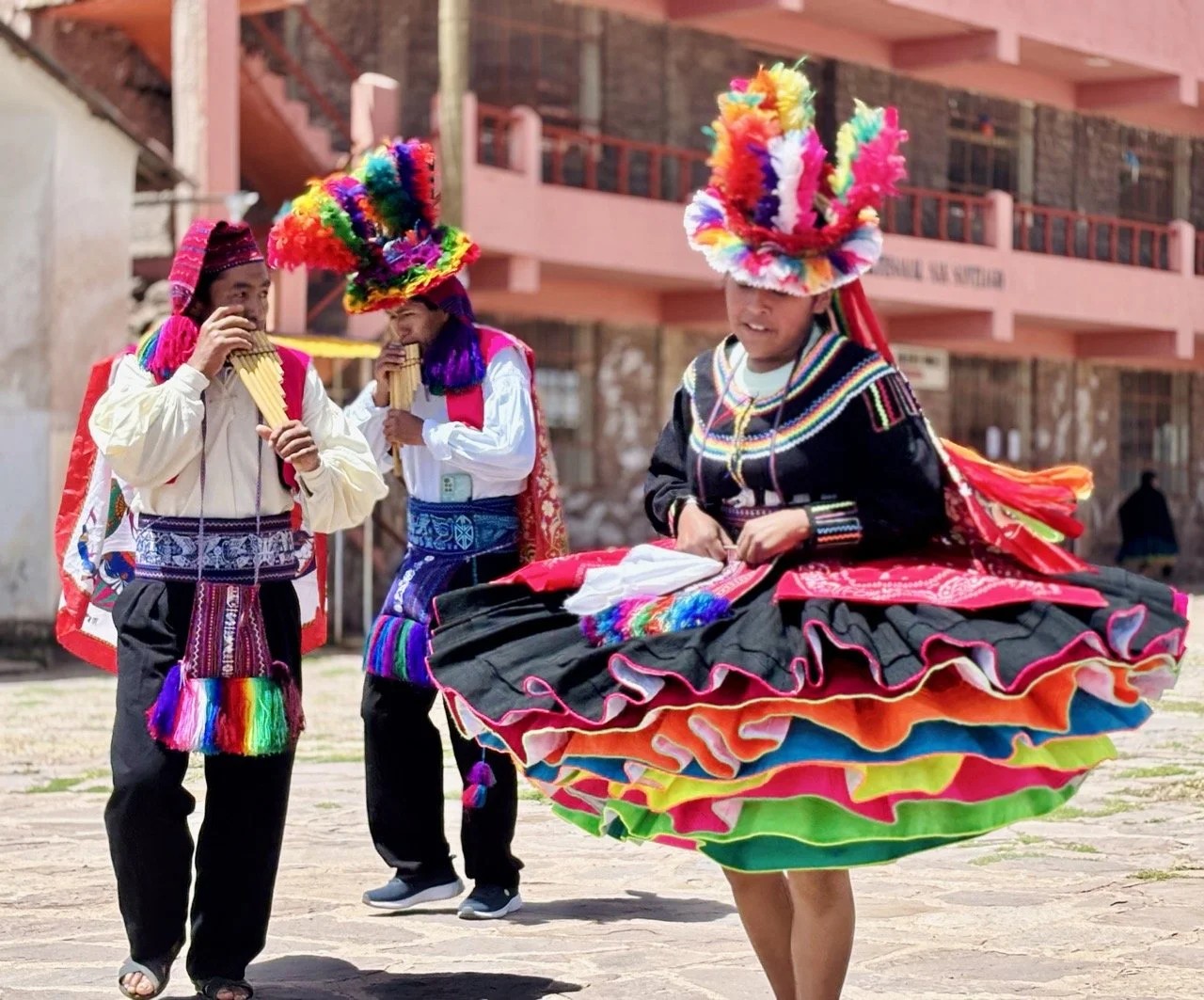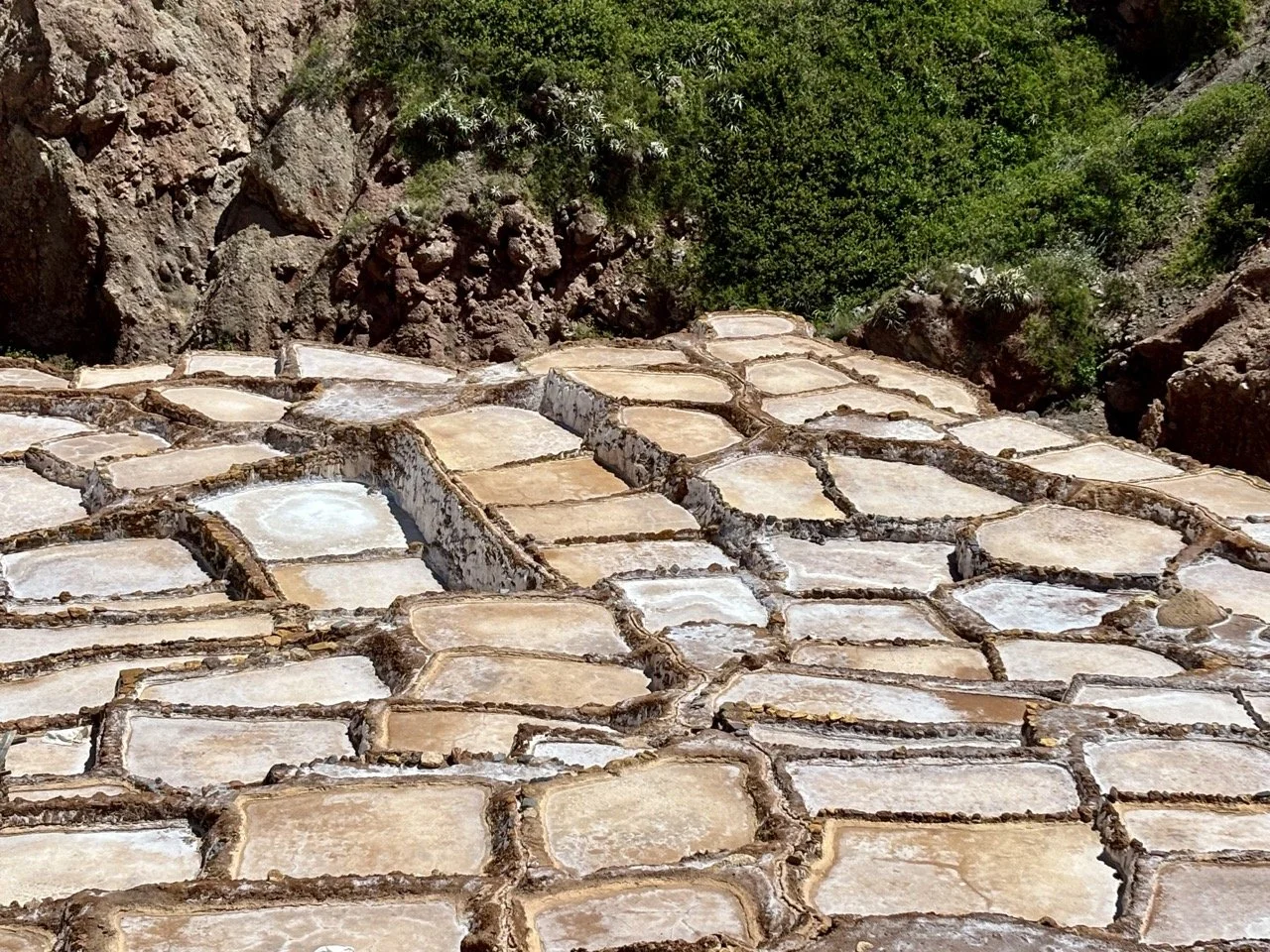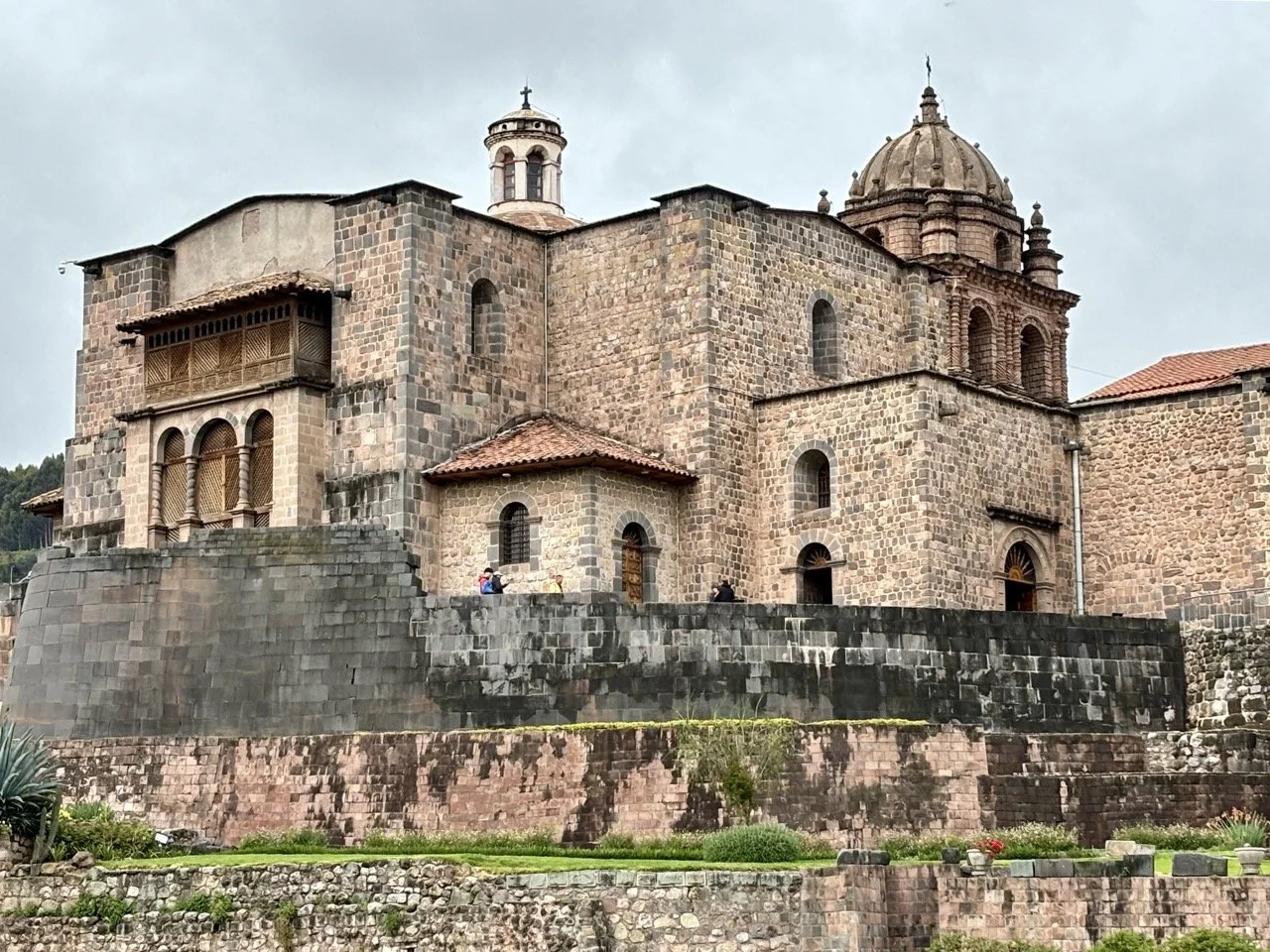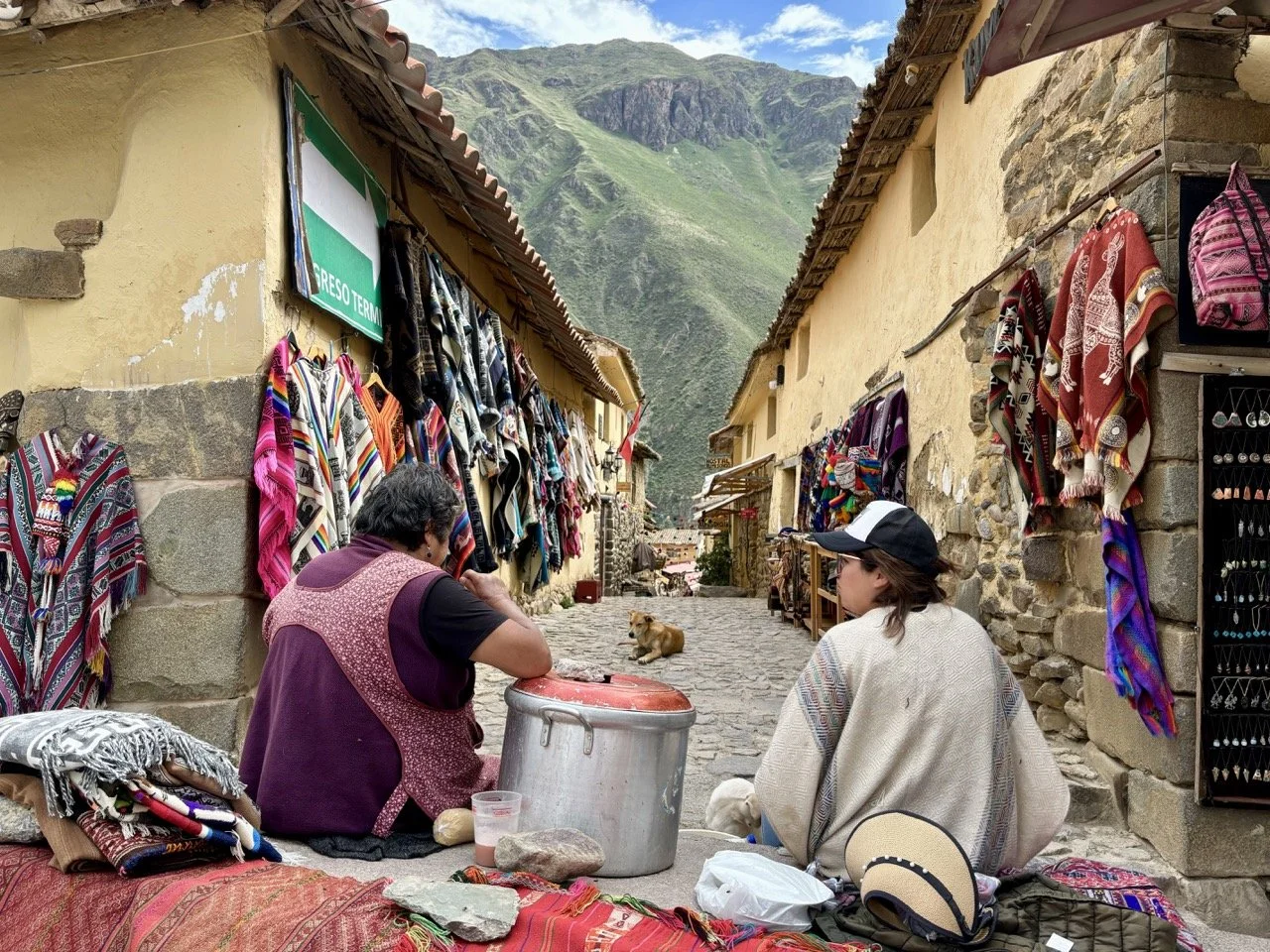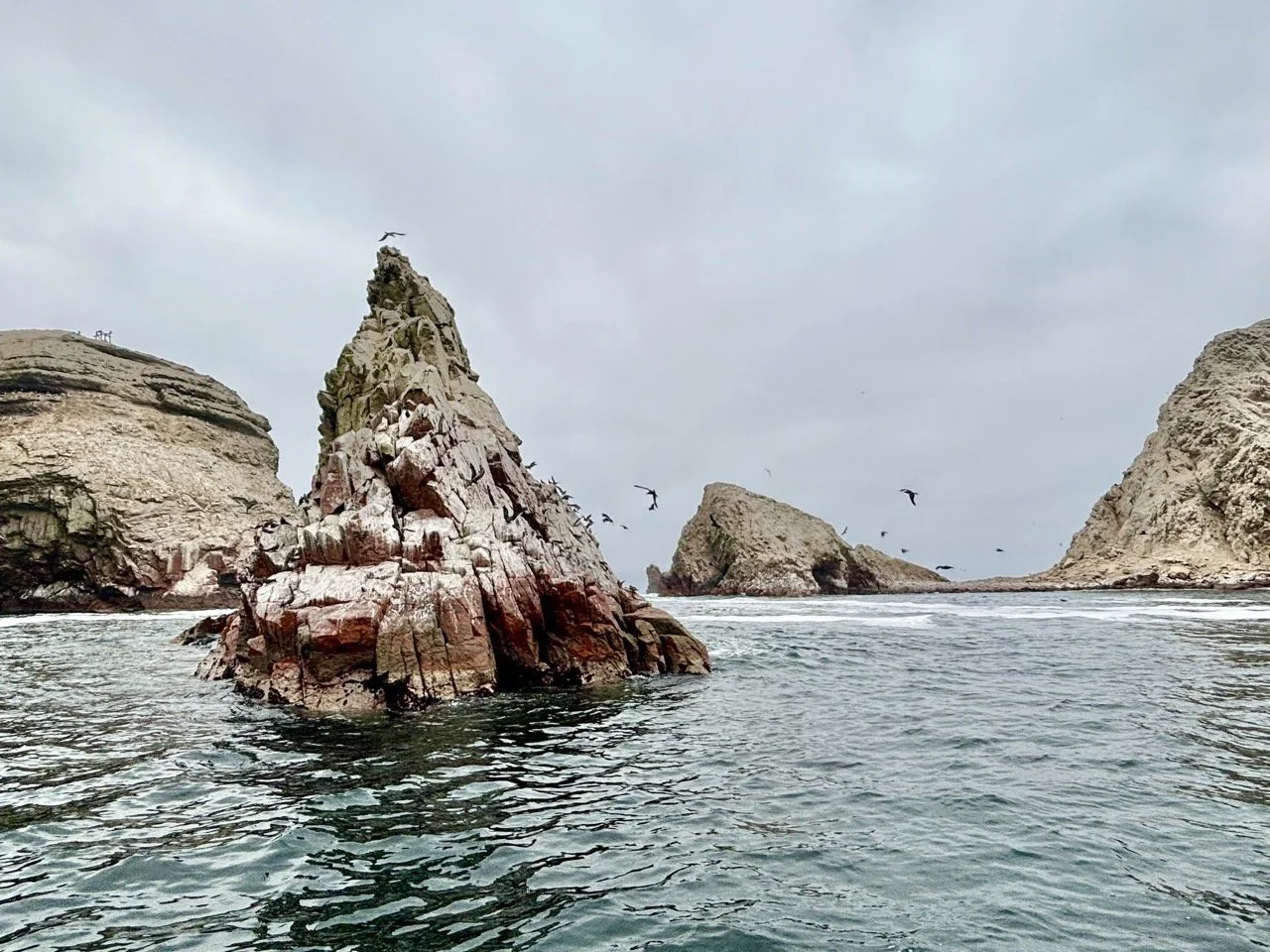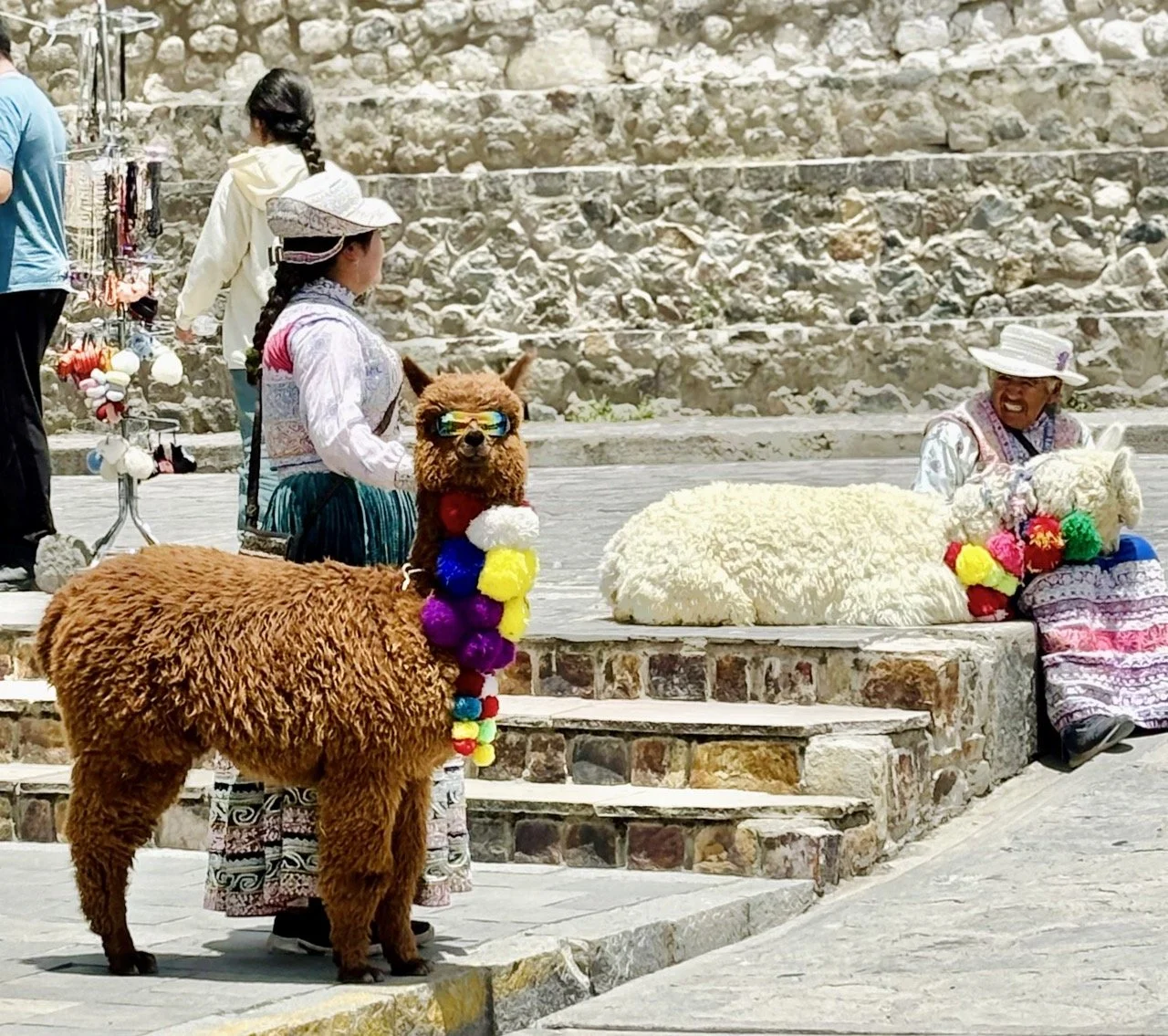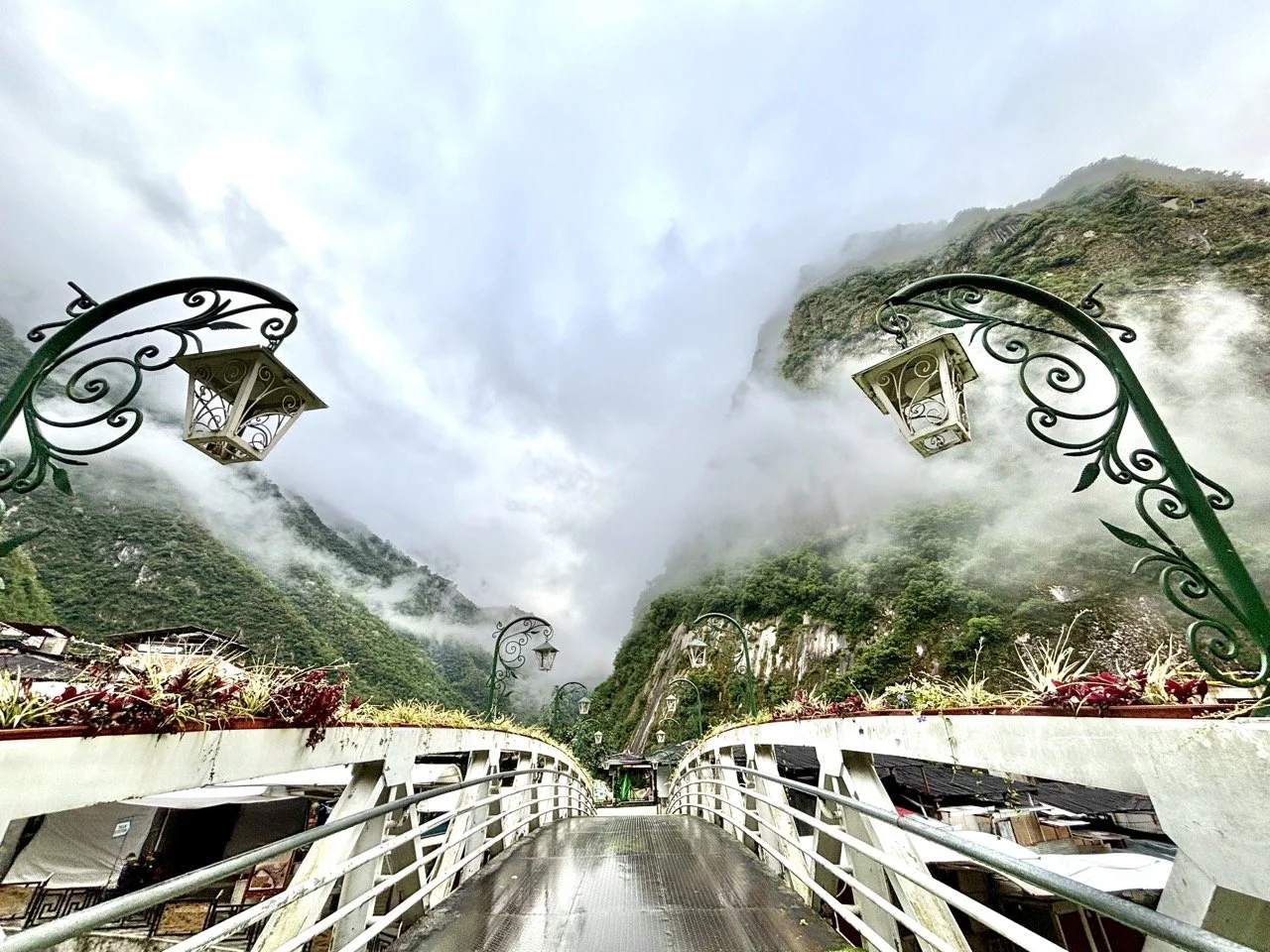【南美洲旅遊全攻略】秘魯自由行全攻略 2025|馬丘比丘、彩虹山、納斯卡線與的的喀喀湖深度旅遊指南 Peru Backpacking Guide 2025|Machu Picchu, Rainbow Mountain, Nazca Lines & Lake Titicaca Adventure
南美洲秘魯自由行|旅遊攝影全攻略
走進秘魯,就像翻開一部南美洲的史詩。從世界奇蹟 馬丘比丘 Machu Picchu,到七彩繽紛的 彩虹山 Rainbow Mountain,再到神秘的 納斯卡線 Nazca Lines 與高原壯麗的 的的喀喀湖 Lake Titicaca,每一步都充滿驚喜。本篇【秘魯旅遊行程攻略】將帶你完整規劃行程:必拍景點、交通方式、住宿建議、美食推薦與攝影 Tips,讓你一次掌握秘魯的歷史、文化與自然奇觀。
Please see English version below
5 個不可錯過秘魯的原因
馬丘比丘:世界新七大奇蹟之一,體驗印加帝國的壯麗遺跡。
彩虹山:五彩斑斕的山峰,是攝影愛好者的天堂。
納斯卡線:神秘的巨型地畫,至今仍是考古學未解之謎。
的的喀喀湖:世界上海拔最高的可航行湖泊,融合自然與人文。
庫斯科古城:印加與西班牙殖民文化交織,歷史氛圍濃厚。
5 個有趣冷知識
秘魯是 馬鈴薯的故鄉,有超過 3000 種品種。
羊駝與駱馬 是秘魯傳統生活的重要夥伴。
的的喀喀湖上有 浮島社區 Uros,由蘆葦建成。
納斯卡線的圖案只有從空中才能清晰看到。
秘魯的 美食被譽為南美第一,尤其是酸橘汁醃魚 (Ceviche)。
秘魯是一個歷史和文化豐富的國家,擁有世界上一些最壯觀的風景和歷史遺址。從古老的馬丘比丘遺址到寧靜的的的喀喀湖,秘魯提供了無數的探索和攝影機會。以下是一些最受歡迎的景點和最佳拍照地點的指南。
一瞥秘魯的歷史
秘魯的歷史是一幅古老文明、西班牙征服和多元文化演變的畫卷。繁盛於15世紀的印加帝國,留下了以建築奇蹟著稱的遺產,最著名的就是馬丘比丘。16世紀的西班牙征服帶來了新的文化和宗教影響,與當地傳統融合,塑造了現代秘魯。
📸 Top 10 必拍景點
馬丘比丘 Machu Picchu – 清晨日出最佳拍攝角度。
彩虹山 Rainbow Mountain – 建議中午前拍攝,顏色最鮮明。
納斯卡線 Nazca Lines – 搭小飛機俯拍巨型圖案。
的的喀喀湖 Lake Titicaca – 與傳統 Uros 浮島居民合影。
庫斯科古城 Cusco – 拍攝廣場、石牆與殖民建築。
瓦卡奇納 Huacachina – 沙漠綠洲日落景觀。
帕拉卡斯 Paracas National Reserve – 海獅與鳥類棲息地。
聖谷 Sacred Valley – 拍攝梯田與山谷村落。
阿雷基帕 Arequipa – 白色火山城,特色修道院。
科爾卡峽谷 Colca Canyon – 拍攝安地斯神鷹翱翔。
2–3 週行程規劃
2 週行程
Day 1–3:利馬 → 庫斯科古城
Day 4–6:馬丘比丘 + 聖谷
Day 7–8:彩虹山健行
Day 9–11:納斯卡線 + 瓦卡奇納綠洲
Day 12–14:的的喀喀湖
3 週行程
加入阿雷基帕、帕拉卡斯與科爾卡峽谷,體驗更多自然奇觀。
推薦餐廳與美食
Ceviche 酸橘汁醃魚 – 秘魯代表性美食。
Lomo Saltado 牛肉炒薯條 – 中西融合料理。
Quinoa 藜麥料理 – 健康又營養。
Chicha Morada 紫玉米飲料 – 傳統清涼飲品。
最佳旅行時間
5–9 月(乾季):天氣穩定,適合健行。
10–4 月(雨季):人少,但部分山路難行。
必訪景點
1. 馬丘比丘 馬丘比丘無疑是秘魯最具標誌性的景點,這座15世紀的印加城堡隱藏在安第斯山脈的高處。這個聯合國教科文組織世界遺產提供了壯麗的景色和對印加建築天才的洞察。**最佳拍照地點:**從太陽門(Inti Punku)或華納比丘山頂俯瞰,能拍攝到無與倫比的全景照片。
2. 庫斯科 曾經是印加帝國的首都,如今的庫斯科是一個充滿活力的城市,保存完好的殖民地建築和印加遺跡。漫步於阿馬斯廣場並參觀太陽神殿。
**最佳拍照地點:**日落時分在薩克塞華曼要塞俯瞰城市,景色壯麗。
3. 的的喀喀湖和普諾 的的喀喀湖是世界上海拔最高的可航行湖泊,橫跨秘魯和玻利維亞邊界。普諾市是通往湖泊的門戶,可以探索烏羅斯浮島和塔奇勒島。
**最佳拍照地點:**從普諾的港口或塔奇勒島拍攝的湖泊日出景色寧靜壯美。
4. 瓦卡奇納 瓦卡奇納是一個位於伊卡附近的沙漠綠洲,以其被高大沙丘環繞的風景如畫的湖泊而聞名。這裡是滑沙和沙灘車遊覽的熱門地點。**最佳拍照地點:
**從周圍沙丘頂上俯瞰綠洲,特別是日落時分,色彩最為鮮豔。
5. 帕拉卡斯國家保護區 這個位於秘魯南部海岸的保護區以其多樣的海洋生物和戲劇性的景觀而聞名。參觀巴列斯塔斯群島可以看到海獅、企鵝和各種鳥類。
**最佳拍照地點:**帕拉卡斯燭臺地畫和紅沙灘的崎嶇海岸線是必看景點。
6. 伊卡 以其葡萄園和皮斯科生產而聞名,伊卡提供了不同的秘魯風味。參觀當地酒莊品嚐秘魯國飲皮斯科。**最佳拍照地點:
**沙漠景觀背景下的綠色葡萄園構成了獨特而壯觀的照片。
攝影 Tips
馬丘比丘:建議日出時進場,逆光拍攝更有氛圍。
彩虹山:高原天氣多變,濾鏡可增強色彩。
的的喀喀湖:日出與日落拍攝倒影最佳。
夜景:庫斯科星空,建議使用三腳架。
前往秘魯最受歡迎景點的交通提示及最佳拍照地點
伊卡和瓦卡奇納
如何到達:
從利馬出發: 搭乘長途巴士(Cruz del Sur、Oltursa),約需4-5小時抵達伊卡。
到瓦卡奇納: 從伊卡搭乘計程車,約10分鐘即可抵達瓦卡奇納綠洲。
最佳拍照地點:
瓦卡奇納湖: 從周圍沙丘頂上俯瞰綠洲,特別是日落時分,色彩最為鮮豔。
沙灘車: 沙灘車遊覽期間拍攝的照片可以捕捉到動態而激動人心的沙漠景觀。
馬丘比丘
如何到達:
從庫斯科出發: 搭乘火車(PeruRail或Inca Rail)至熱水鎮,然後換乘接駁巴士到達馬丘比丘入口。
徒步: 考慮選擇印加古道或薩爾坎泰步道,這些冒險路線可直接到達馬丘比丘。
最佳拍照地點:
太陽門(Inti Punku): 提供馬丘比丘的經典全景視角。
華納比丘山: 攀登此峰可拍攝到遺址及周圍山脈的全景照片。
馬丘比丘拍攝攻略
拍攝時間
早晨:清晨的光線柔和,是拍攝馬丘比丘全景的最佳時間。此外,清晨的薄霧和光影效果增添了神秘感。
黃昏:午後的光線更具戲劇性,特別是日落時分。這時候人群相對較少,可以拍攝到更純淨的景象。
拍攝角度
俯瞰全景:從Huayna Picchu或Machu Picchu Mountain(需提前預訂門票)上俯瞰整個遺址,是最具代表性的拍攝角度。
近景細節:遺址內部的石牆、階梯和建築細節也值得仔細拍攝,這些近景可以展示古代印加人的建築智慧。
拍攝建議
帶上廣角鏡頭:用來捕捉遺址的壯麗全景。
注意天氣變化:馬丘比丘的天氣變幻莫測,帶上防水裝備和防潮相機袋。
早到:早晨6點開門,越早到達越能避開人群,拍攝到更理想的照片。
普諾和的的喀喀湖
如何到達:
從庫斯科出發: 搭乘巴士或火車(Andean Explorer by Belmond),這是一條風景優美的路線,需時約7-10小時。
從阿雷基帕出發: 可搭乘巴士,約需5-6小時。
最佳拍照地點:
烏羅斯浮島: 捕捉獨特的蘆葦島和傳統蘆葦船。
塔奇勒島: 拍攝湖面日出景色,寧靜而美麗。
的的喀喀湖拍攝攻略
拍攝時間
早晨:早晨的湖面風平浪靜,能夠拍攝到湖面的倒影。
日落:黃昏時分,夕陽的餘暉映照在湖面上,色彩絢麗,是拍攝湖景的最佳時機。
拍攝角度
湖中島嶼:前往烏羅斯浮島(Uros Floating Islands)或塔奎勒島(Taquile Island),可以拍攝到當地特色的原住民生活場景和獨特的建築。
湖邊村莊:從岸邊拍攝湖面,可以捕捉到湖水與周圍自然風光的完美結合。
拍攝建議
帶上長焦鏡頭:可以捕捉到湖中船隻和遠處的島嶼細節。
注意高原反應:的的喀喀湖位於高海拔地區,注意休息和適應環境。
庫斯科
如何到達:
從利馬出發: 直飛庫斯科的航班約需1.5小時。
搭乘巴士: 長途巴士可達,但需時約20-24小時。
最佳拍照地點:
薩克塞華曼: 要塞提供俯瞰城市的絕佳視角,特別是在日落時分。
阿馬斯廣場: 捕捉歷史建築和充滿活力的城市生活。
庫斯科拍攝攻略
拍攝時間
全天:庫斯科的街景和建築隨時都可以拍攝,但清晨和黃昏的光線最為柔和。
拍攝角度
城市全景:從聖布拉斯區(San Blas)或Sacsayhuaman遺址俯瞰整個城市,能夠拍攝到庫斯科的全景。
歷史建築:市中心的庫斯科大教堂(Cusco Cathedral)和太陽神殿(Qorikancha)等歷史建築都是拍攝的熱門景點。
街景人文:庫斯科的街頭藝人、市場和當地人的日常生活都是很好的拍攝主題。
拍攝建議
帶上廣角鏡頭:捕捉城市全景和歷史建築的壯麗。
注意安全:在拍攝時要小心個人財物,避免在人多的地方露出貴重攝影設備。
帕拉卡斯國家保護區
如何到達:
從利馬出發: 搭乘巴士(Cruz del Sur、Oltursa)至帕拉卡斯,約需3.5-4小時。
從伊卡/瓦卡奇納出發: 巴士或計程車約需1-1.5小時。
最佳拍照地點:
紅沙灘(Playa Roja): 獨特的紅色沙灘對比藍色海洋,形成鮮明照片。
巴列斯塔斯群島: 野生動物愛好者可在船遊期間拍攝海獅、企鵝和各種鳥類。
秘魯最可愛的羊駝:種類、歷史及對當地居民的重要性
歷史背景
羊駝在秘魯的歷史可以追溯到幾千年前,這些動物在印加文明和之前的安第斯文明中扮演了重要角色。考古證據表明,羊駝和駱馬在秘魯的馴化可以追溯到公元前5000年。羊駝不僅是紡織品的重要來源,還是宗教儀式和貿易的重要組成部分。
羊駝的種類
秘魯是羊駝的故鄉,這裡的羊駝主要分為兩種類型:
羊駝(Alpaca)
胡卡亞亞(Huacaya):這是最常見的羊駝品種,毛皮密實而捲曲,質地非常柔軟,主要用於製作保暖的衣物。
蘇利羊駝(Suri Alpaca):這種羊駝的毛皮呈現絲狀,光滑而垂直,適合製作高檔的紡織品。
駱馬(Llama)
駱馬比羊駝體型較大,毛皮較粗糙,主要用作運輸和負重工具。駱馬毛也可以用來製作粗糙的紡織品,但不如羊駝毛細膩。
對當地居民的重要性
經濟價值
紡織業:羊駝毛是秘魯紡織業的核心材料,當地居民將其用來製作各種服裝、毯子和手工藝品,這些產品不僅在國內市場上銷售,還出口到全球各地,為當地經濟帶來可觀收入。
旅遊業:羊駝和駱馬吸引了大量遊客,許多旅遊活動如徒步旅行和農場參觀都圍繞著這些動物展開,促進了當地旅遊業的發展。
文化和傳統
傳統服飾:當地人穿著由羊駝毛製成的傳統服飾,不僅保暖,還具有文化象徵意義,展示了他們的民族自豪感。
宗教儀式:在許多安第斯宗教儀式中,羊駝和駱馬扮演重要角色,牠們經常被用作祭品或象徵性動物,祈求豐收和和平。
日常生活
運輸和農業:駱馬被廣泛用於運輸農產品和其他物資,尤其是在偏遠山區,這些動物是當地居民的重要勞動力。
社會結構:飼養羊駝和駱馬是許多安第斯家庭的核心活動,這些動物的飼養和照顧促進了家庭成員之間的合作和關愛。
羊駝和駱馬對秘魯當地居民具有深遠的重要性,從經濟、文化到日常生活的各個方面,這些動物都扮演了不可或缺的角色。牠們不僅是秘魯自然和文化遺產的一部分,也代表了這個國家的獨特魅力。通過保護和珍視這些動物,我們不僅在支持當地經濟,也在保護一段寶貴的歷史和文化。
文化小提醒
尊重當地人肖像權,拍照前先詢問。
在祭典或教堂,避免喧嘩或穿著不當。
記得帶零錢,許多村落以現金交易為主。
總結
秘魯不只是馬丘比丘,更是彩虹山的色彩、納斯卡線的神秘、的的喀喀湖的人文與沙漠綠洲的驚喜。秘魯是一片無盡發現的土地,每一個角落都充滿了故事和完美的拍照機會。無論你是在古老遺址漫步,探索充滿活力的城市,還是沉浸在自然美景中,秘魯都承諾帶來難忘的經歷和壯麗的回憶。
準備好你的秘魯冒險了嗎?
收藏並分享這篇【秘魯自由行攝影攻略】
在留言告訴我 → 你最想探索的秘魯景點是哪裡?我會幫你打造專屬行程!
延伸閱讀:南美洲完整旅遊攻略
關於作者|Toto Kuo
大家好,我是 Toto Kuo,來自台灣,目前定居在浪漫的 希臘聖托里尼。身為一名熱愛探索的攝影師與旅人,我曾以背包客的身分走遍 超過 80 個國家,並曾旅居 加拿大、紐約、巴黎,且在 4 個國家打工度假,用旅行的方式體驗世界的多元文化。
目前,我與希臘先生在聖托里尼一起經營一家 希臘餐廳 Karma 與 聖托里尼婚紗攝影工作室,同時把我最熱愛的攝影、旅行、美食與文化分享給更多人。無論是 希臘小島推薦、聖托里尼完整攻略、在地美食推薦、咖啡館探訪、旅遊攝影指南,和自由行的行程安排,我都會透過文字與影像帶你親身感受。
Peru Backpacking Adventure|The Ultimate Travel & Photography Guide
Discover Peru — a land of history, color, and wonder. From the legendary Machu Picchu and vibrant Rainbow Mountain to the mysterious Nazca Lines and the breathtaking Lake Titicaca, every step reveals a new adventure. This Peru Travel Guide shares must-see spots, itineraries, transport tips, food, and photography secrets to help you plan the trip of a lifetime.
5 Reasons to Visit Peru
Machu Picchu – one of the New Seven Wonders.
Rainbow Mountain – surreal, colorful landscapes.
Nazca Lines – mysterious geoglyphs seen from the air.
Lake Titicaca – world’s highest navigable lake.
Cusco – blend of Inca heritage and colonial charm.
5 Fun Facts
Peru is the birthplace of potatoes with 3000+ varieties.
Llamas and alpacas play key roles in Andean life.
The Uros Islands on Lake Titicaca are made of reeds.
Nazca Lines’ patterns are only visible from above.
Peru is often called the food capital of South America.
📸 Top 10 Photo Spots
Machu Picchu – sunrise views over the ruins.
Rainbow Mountain – vivid colors before noon.
Nazca Lines – aerial shots of giant geoglyphs.
Lake Titicaca – reflections at dawn and dusk.
Cusco – plazas, stone walls, colonial architecture.
Huacachina – desert oasis at sunset.
Paracas Reserve – sea lions, birds, coastal cliffs.
Sacred Valley – terraces and village life.
Arequipa – white volcanic city with monasteries.
Colca Canyon – condors soaring over cliffs.
Peru, a country rich in history and culture, is home to some of the most breathtaking landscapes and historical sites in the world. From the ancient ruins of Machu Picchu to the serene waters of Lake Titicaca, Peru offers countless opportunities for exploration and photography. Here’s a guide to some of the most popular attractions and the best photo spots in this incredible country.
A Glimpse into Peru's History
Peru's history is a tapestry of ancient civilizations, Spanish conquest, and vibrant cultural evolution. The Inca Empire, which flourished in the 15th century, left an indelible mark with its architectural marvels, most notably Machu Picchu. The Spanish conquest in the 16th century introduced new cultural and religious influences, blending with indigenous traditions to shape modern Peru.
Must-Visit Attractions
1. Machu Picchu Arguably the most iconic site in Peru, Machu Picchu is a 15th-century Inca citadel nestled high in the Andes Mountains. This UNESCO World Heritage site offers stunning views and a glimpse into the architectural genius of the Incas.
Best Photo Spot: The classic view from the Sun Gate (Inti Punku) or the summit of Huayna Picchu provides unparalleled panoramic shots.
2. Cusco Once the capital of the Inca Empire, Cusco is now a vibrant city with well-preserved colonial architecture and Inca ruins. Stroll through the Plaza de Armas and visit the Qorikancha temple. Best Photo Spot: Sacsayhuamán fortress at sunset offers a breathtaking view over the city.
3. Lake Titicaca and Puno Lake Titicaca, the highest navigable lake in the world, straddles the border between Peru and Bolivia. The city of Puno serves as a gateway to the lake, where you can explore the Uros floating islands and Taquile Island.
Best Photo Spot: Sunrise over the lake from Puno's harbor or Taquile Island provides stunning, tranquil scenes.
4. Huacachina A desert oasis near Ica, Huacachina is famous for its picturesque lagoon surrounded by towering sand dunes. It's a popular spot for sandboarding and dune buggy rides.
Best Photo Spot: Capture the oasis from atop the surrounding dunes, especially at sunset when the colors are most vibrant.
5. Paracas National Reserve This protected area on the southern coast of Peru is known for its diverse marine wildlife and dramatic landscapes. Visit the Ballestas Islands to see sea lions, penguins, and a variety of bird species.
Best Photo Spot: The Paracas Candelabra geoglyph and the rugged coastline at Playa Roja (Red Beach) are must-see sights.
6. Ica Known for its vineyards and pisco production, Ica offers a different taste of Peru. Visit local wineries to sample Peru's national drink, pisco.
Best Photo Spot: The lush vineyards against the backdrop of the desert landscape make for unique and stunning photos.
Tips for Reaching Peru's Most Popular Attractions and Capturing the Best Photos
Ica and Huacachina
How to Get There:
From Lima: Take a bus (Cruz del Sur, Oltursa) for a 4-5 hour journey to Ica.
To Huacachina: From Ica, it's a short 10-minute taxi ride to the oasis of Huacachina.
Best Photo Spots:
Huacachina Lagoon: Capture the oasis from the top of the surrounding sand dunes, especially at sunset for vibrant colors.
Dune Buggies: Photos taken during dune buggy rides offer dynamic and exciting shots of the desert landscape.
Machu Picchu
How to Get There:
From Cusco: Take a train (PeruRail or Inca Rail) to Aguas Calientes, followed by a shuttle bus to the entrance of Machu Picchu.
Hiking: Consider the Inca Trail or the Salkantay Trek for a more adventurous approach, ending directly at Machu Picchu.
Best Photo Spots:
Sun Gate (Inti Punku): Offers a classic, sweeping view of Machu Picchu.
Huayna Picchu: Climbing this peak provides panoramic shots of the ruins and surrounding mountains.
Puno and Lake Titicaca
How to Get There:
From Cusco: Take a bus or a train (Andean Explorer by Belmond) for a scenic ride to Puno, lasting around 7-10 hours.
From Arequipa: Buses are available and take approximately 5-6 hours.
Best Photo Spots:
Uros Floating Islands: Capture the unique reed islands and traditional reed boats.
Taquile Island: Sunrise over Lake Titicaca provides serene and beautiful images.
Cusco
How to Get There:
From Lima: Direct flights to Cusco take about 1.5 hours.
By Bus: Long-distance buses are available but take about 20-24 hours.
Best Photo Spots:
Sacsayhuamán: The fortress provides an excellent viewpoint over the city, especially at sunset.
Plaza de Armas: Capture the historical architecture and vibrant city life.
Paracas National Reserve
How to Get There:
From Lima: Take a bus (Cruz del Sur, Oltursa) to Paracas, a journey of about 3.5-4 hours.
From Ica/Huacachina: Paracas is a 1-1.5 hour bus or taxi ride.
Best Photo Spots:
Playa Roja (Red Beach): The unique red sand beach against the blue sea makes for striking photos.
Ballestas Islands: Wildlife enthusiasts can capture sea lions, penguins, and diverse bird species on a boat tour.
The Most Adorable Alpacas in Peru: Types, History, and Importance to Local Residents
Historical Background
The history of alpacas in Peru dates back thousands of years. These animals played a significant role in the Inca civilization and earlier Andean cultures. Archaeological evidence suggests that the domestication of alpacas and llamas in Peru dates back to around 5000 BC. Alpacas were not only a vital source of textiles but also an essential part of religious ceremonies and trade.
Types of Alpacas
Peru is the homeland of alpacas, and there are two main types of alpacas found here:
Alpacas (Alpaca)
Huacaya: This is the most common type of alpaca, known for its dense and crimped fleece, which is very soft and primarily used to make warm clothing.
Suri Alpaca: This type of alpaca has silky and straight fleece that hangs down, making it ideal for producing high-end textiles.
Llamas (Llama)
Llamas are larger than alpacas and have coarser fleece. They are primarily used as pack animals for carrying loads. Llama fleece can also be used to make textiles, though it is not as fine as alpaca fleece.
Importance to Local Residents
Economic Value
Textile Industry: Alpaca fleece is at the heart of Peru's textile industry. Local residents use it to make various clothing items, blankets, and handicrafts, which are sold both domestically and internationally, providing significant income to the local economy.
Tourism Industry: Alpacas and llamas attract numerous tourists. Many tourism activities, such as trekking and farm visits, revolve around these animals, boosting the local tourism sector.
Culture and Tradition
Traditional Clothing: Local people wear traditional clothing made from alpaca fleece. These garments are not only warm but also carry cultural significance, showcasing their ethnic pride.
Religious Ceremonies: Alpacas and llamas play essential roles in many Andean religious rituals. They are often used as offerings or symbolic animals to pray for harvests and peace.
Daily Life
Transportation and Agriculture: Llamas are widely used for transporting agricultural products and other goods, especially in remote mountainous areas. These animals are crucial labor sources for local residents.
Social Structure: Raising alpacas and llamas is a central activity for many Andean families. The care and management of these animals foster cooperation and care among family members.
Alpacas and llamas hold profound importance for local residents in Peru, impacting their economy, culture, and daily lives. These animals are not only part of Peru's natural and cultural heritage but also symbolize the unique charm of this country. By protecting and cherishing these animals, we support the local economy and preserve a valuable piece of history and culture.
2–3 Week Itinerary
2 Weeks
Day 1–3: Lima → Cusco
Day 4–6: Machu Picchu + Sacred Valley
Day 7–8: Rainbow Mountain hike
Day 9–11: Nazca Lines + Huacachina
Day 12–14: Lake Titicaca
3 Weeks
Add Arequipa, Paracas, and Colca Canyon.
Food & Restaurants
Ceviche – iconic Peruvian dish.
Lomo Saltado – stir-fried beef with potatoes.
Quinoa dishes – nutritious Andean staple.
Chicha Morada – purple corn drink.
Best Time to Visit
May–Sep (dry season): ideal for hiking.
Oct–Apr (wet season): fewer tourists, some trails muddy.
Photography Tips
Machu Picchu: sunrise, backlight shots.
Rainbow Mountain: filters to enhance hues.
Lake Titicaca: golden hour reflections.
Night sky: tripod for Cusco’s stars.
Final Thoughts
Peru is more than Machu Picchu—it’s Rainbow Mountain’s colors, Nazca’s mysteries, Lake Titicaca’s culture, and Huacachina’s desert sunsets.
Peru is a land of endless discovery, where every corner holds a story and a perfect photo opportunity. Whether you are wandering through ancient ruins, exploring vibrant cities, or soaking in the natural beauty of its landscapes, Peru promises unforgettable experiences and breathtaking memories.
Ready for your Peru adventure?
Save & share this Peru Travel Guide
Comment your dream Peru spot → I’ll help you design the perfect itinerary!
All photos by Toto Kuo
#秘魯 #帕拉卡斯國家保護區 #庫斯科 #普諾 #的的喀喀湖 #馬丘比丘 #伊卡 #瓦卡奇納 #拍照熱點指南 #必去熱門景點 #中南美洲 #旅遊攝影 #旅遊部落格 #Peru #Paracas National Reserve #Cusco #Puno #Lake Titicaca #Machu Picchu #Ica #Huacachina #Photography Hotspot Guide #Must-Go Popular Attractions #Central and South America #Travel Photography #travelblog

